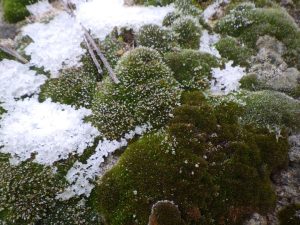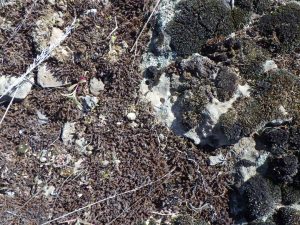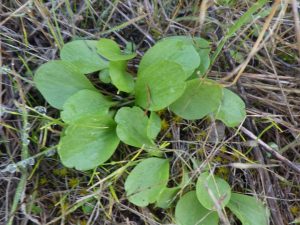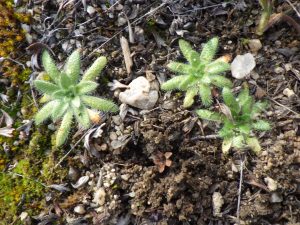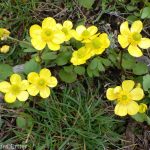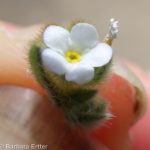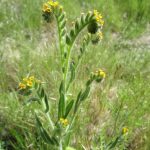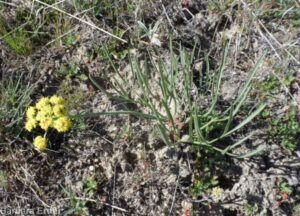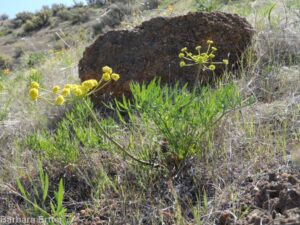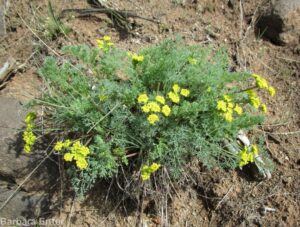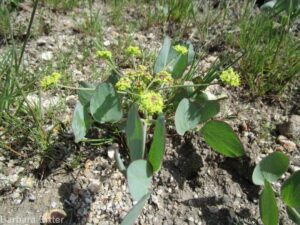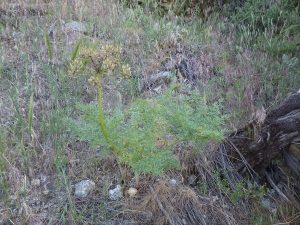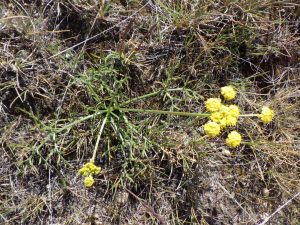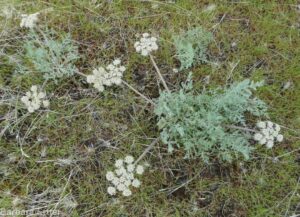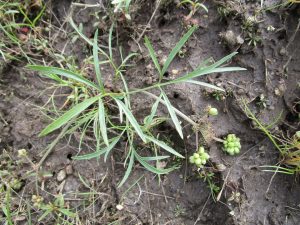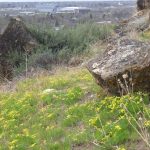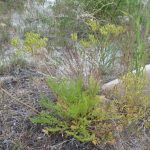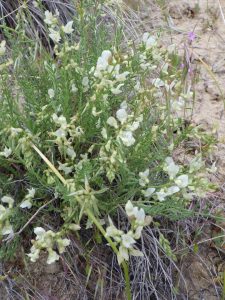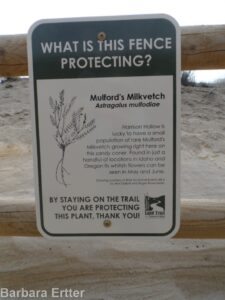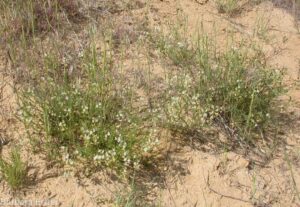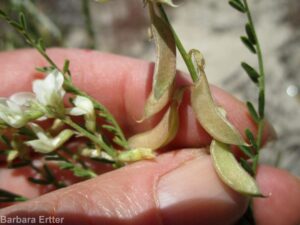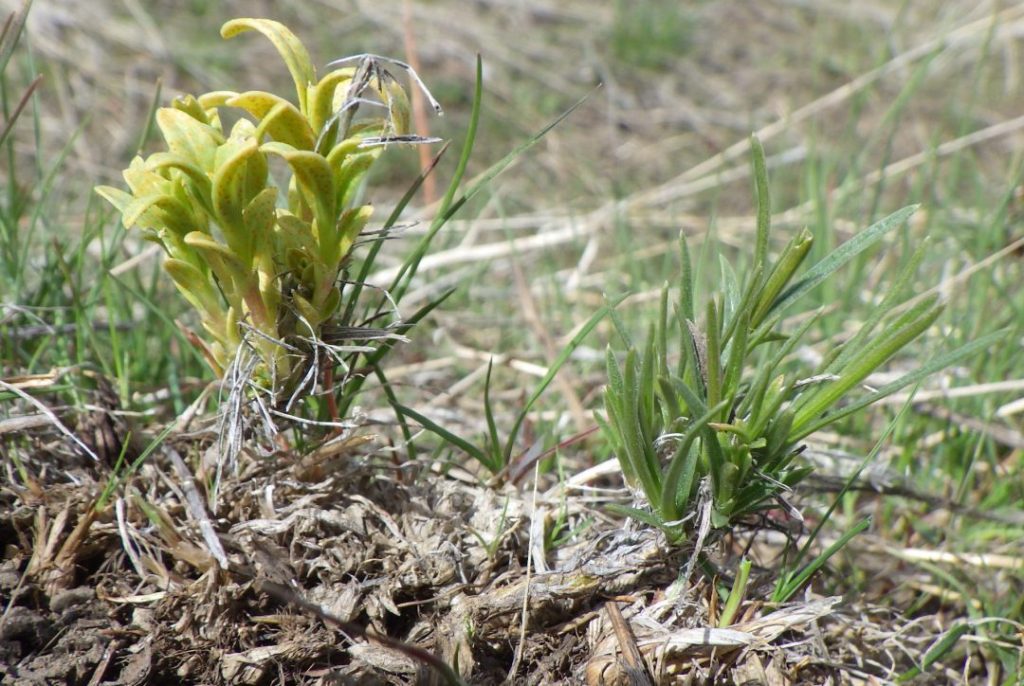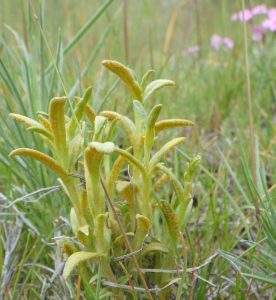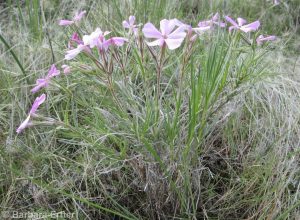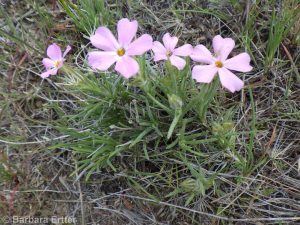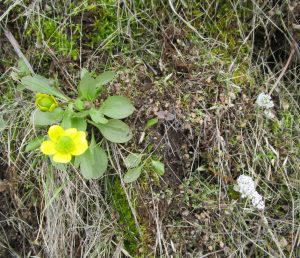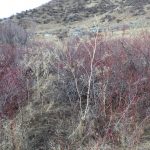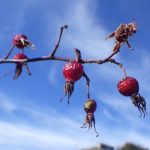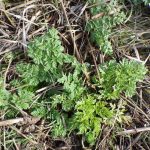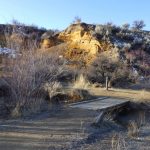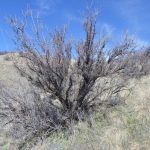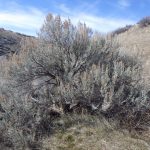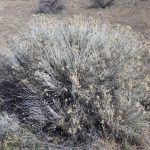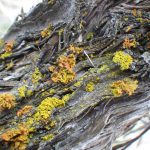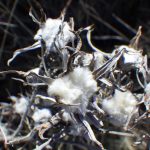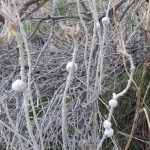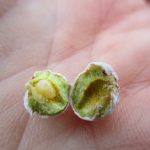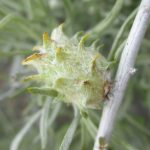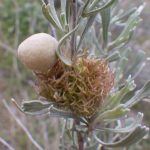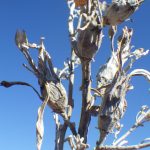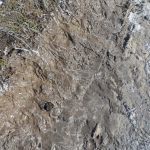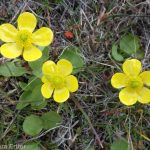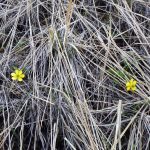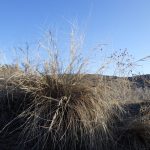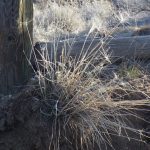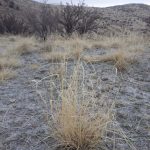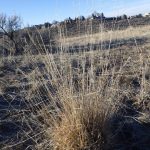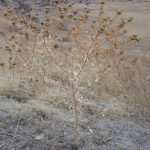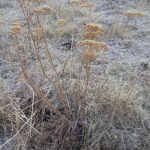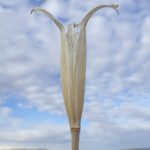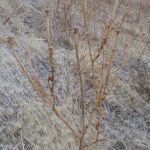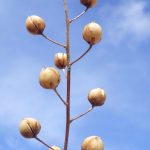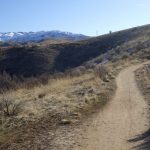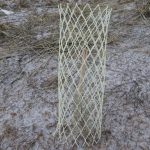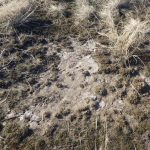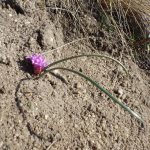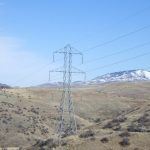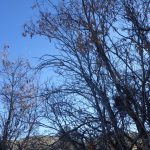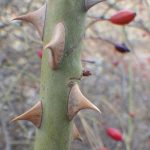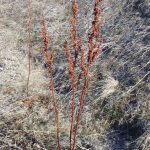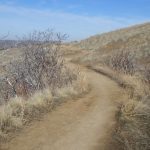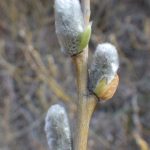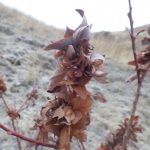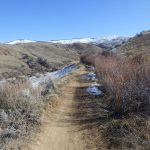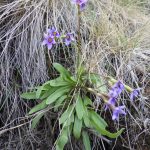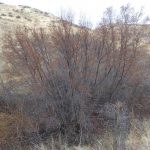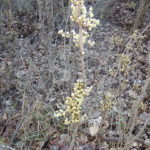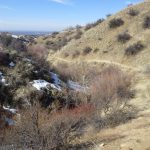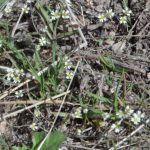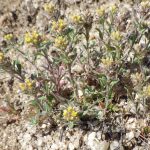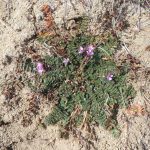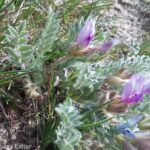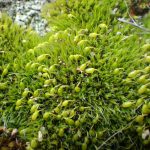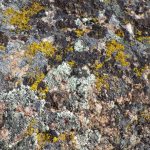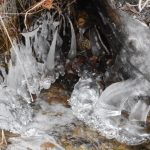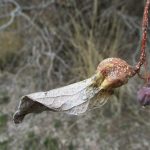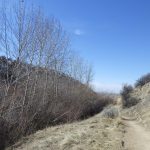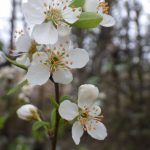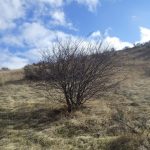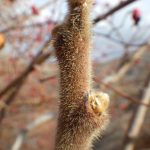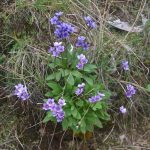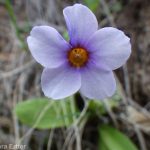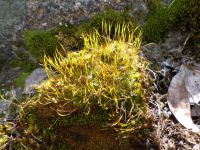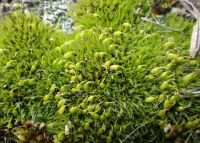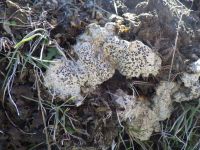One intriguing historical aspect of the Boise Front is the predominance of women who were among the earliest significant botanical collectors, or who otherwise contributed to our knowledge of the original flora of the area. A brief synopsis of four of these women who were active before 1950 is provided here: A. Isabel Mulford, Mary Hallock Foote, June A. Clark, and Bernice Bjornson; Annetta McBride is also briefly mentioned. Biographical information on Mulford is mostly derived from the efforts of my colleague Carol Prentice; since the full version is already posted elsewhere on this site (“Isabel Mulford and her Milkvetch“), only a very abbreviated account is presented here. The literary contributions of Foote have resulted in her being the focus of multiple studies, though her natural history contributions are less well known. My intent is to do a future article on these contributions, with the synopsis presented below only a few highlights.
In contrast, June Clark and Bernice Bjornson have been largely unknown, except as names of collectors on herbarium specimens. The accounts below are my first efforts to summarize what I have been able to learn about these two enigmatic women, greatly helped by sleuthing provided by Molly Ackley Brown and Tom Thomason, classmates of mine at Boise High School. I also acknowledge the assistance of Burrell E. “Ernie” Nelson and Ben Legler at the Rocky Mountain Herbarium, University of Wyoming. The Consortium of Pacific Northwest Herbaria has also been an invaluable resource, and the source of specimen images incorporated here.
These accounts undoubtedly only scratch the surface of what can still be found learned about these women, including the times they lived in, their motivations, and the troubles they faced. Full coverage would also include whatever records could be located about the Shoshone, Bannock, and Northern Paiute women who have called this area home since time immemorial.
A. ISABEL MULFORD

The most noteworthy early woman botanical collector in southern Idaho is A. Isabel Mulford, who is only briefly mentioned here since she already has her own post on this website. Mulford’s milkvetch (Astragalus mulfordiae), named in her honor, is the best-known of the plants collected by Mulford during her time in southern Idaho in 1894. The milkvetch is is endemic to the western Snake River Plain in southwestern Idaho and adjacent Oregon, restricted to loose, sandy substrates of former Lake Idaho sediments.
Another plant that Mulford not only collected but also named as a new species is white frasera (Frasera montana). This lovely white-flowered plant (which deserves to be in cultivation!) is endemic to the central Idaho mountains, barely entering the Boise Front area at the northern margins of the Conifer Zone (see Clear Creek, below). Three other plants described by Mulford from Idaho have, alas, been absorbed by previously named species: Oenothera idahoensis into O. caespitosa ssp. marginata, Frasera caerulea into F. albicaulis var. cusickii, and Gilia grandiflora var. diffusa into an undifferentiated Collomia grandiflora.
MARY HALLOCK FOOTE

Mulford’s publications indicate that she spent at least one day in the field with locally renowned Mary Hallock Foote, and presumably had other interactions with her as well. Foote’s memoirs, posthumously published as A Victorian Gentlewoman in the Far West, describe the travails experienced by the family as her husband, Arthur Foote, pursued various engineering schemes (including what would eventually become the New York Canal) in the western United States and Mexico. During the financial lean times, including most of her Idaho years (1880’s and 1890’s), she helped support their growing family with her professionally trained illustrations and abundant writings, which found an eager market on the East Coast thanks to her personal connections.
Although not a botanist herself, Foote’s written opus, both fictional and non-fiction, is replete with detailed observations of local natural history that deserve more attention (and is the intended topic for a future article). My favorite example is from the short story “The Lamb That Couldn’t Keep Up”, published in The Little Fig-Tree Stories (1899). Even though fictionalized, it is based on an actual occurrence, when a band of 8,000(!) sheep spent the night upstream from their Canyon Home near present-day Lucky Peak Dam:
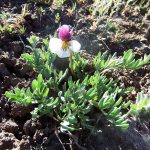
“Those eastern hills in spring had been covered with wildflowers,—the moss pink, lupines both white and blue, wild phlox, the small yellow crocus [Fritillaria pudica], beds of tiny sweet-scented wild pansies [Viola beckwithii?], the camas flower [Camassia quamash], and a tall-stemmed, pale lilac lily [Calochortus macrocarpus],—the queen of the hill garden. But when spring came again, the old pathways were like an ash heap. The beautiful hill garden was a desert.”
Some of the plants mentioned in this passage are still present at this locality (Lydle Gulch), but nowhere close to the initial abundance described by Foote. Others have disappeared completely from the area (e.g., camas); the identity of her “moss pink” remains a mystery.
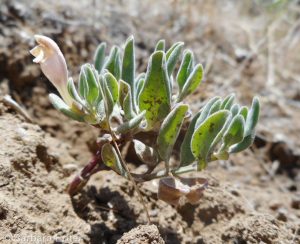
Foote’s interaction with Mulford is addressed in the article in which Mulford describes the plants she collected in Idaho (Mulford 1894). One of these was a diminutive skullcap named in Foote’s honor: “This was found at about 3,500 ft near Black Cañon [presumably Black Cliffs], Boise River, June 18th. I have named the plant in honor of Mrs. Mary Hallock Foote, who planned, and accompanied me upon the pleasant expedition which led to its discovery.” Alas, Foote’s botanical claim to fame was short-lived, with Scutellaria footeana soon disappearing into the synonymy of the relatively widespread dwarf skullcap, S. nana. This species can still be found in Lydle Gulch, but not in abundance.
JUNE A. CLARK

My initial awareness and curiosity about June Clark was triggered by a few sentences in one of Aven Nelson’s articles describing new plants from Idaho (Nelson 1912). Many of these plants were collected by his eventual protégé James Francis Macbride, but his 1912 article also includes “a few species based upon collections by Miss June A. Clark, of Boise, at present a student in the Idaho State University. During 1911 she made very creditable collections of the plants of the mountains adjacent to Boise, and in the mountains of Washington County of her state.”
Although Nelson placed Clark at Idaho State University, this is not the university in Pocatello that currently has that name. The precursor institution of the Academy of Idaho was created in 1901, but it did not become Idaho State University until 1963 (with multiple interim designations in between, including as the southern branch of the University of Idaho; see History of ISU). Clark would instead have been a student of at the original University of Idaho located in Moscow, where many of her collections can be found. She evidently became a student shortly after the University of Idaho herbarium (= research collection of dried plants) had been destroyed in the Administration Building fire of 1906. Louis F. Henderson, the botany professor at University of Idaho who had founded the herbarium, was so disheartened by its destruction that he retired in 1908 (Love 2001).
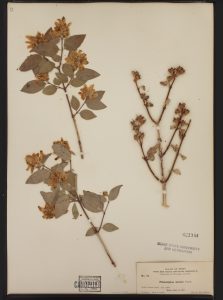
Faced with the lack of comparative material and an experienced botanical advisor, it is no surprise that Clark sent her collections to Aven Nelson, a professor at University of Wyoming, who was the closest thing to a professional botanist existing in the northern Rocky Mountains at that time. In fact, the first set of the 346 collections Clark made in 1911 are housed not in the herbarium at the University of Idaho (ID), but in the Rocky Mountain Herbarium (RM) at the University of Wyoming, which is also where her field book ended up (B.E. Nelson 2004, pers. comm). Duplicate sets of her collections were subsequently distributed to other herbaria using labels from the Rocky Mountain Herbarium: 91 to Montana State University (MONT), 80 to Washington State University (WS), 65 to New York Botanical Garden (NY), and only 52 to University of Idaho (ID). A few also ended up at University of Washington (WTU), Oregon State University (OSC), and Boise State University (SRP) (Consortium of Pacific Northwest Herbaria, queried 14 Apr 2024).
The majority of these collections are from in or near Boise, primarily simply “Boise” (most likely Ada County) but also many from “Boise (Clear Creek)” in Boise County (more about Clear Creek below). Several are from “Squaw Butte” (recently renamed Sehewoki’l Newenee’an Katete), at that time in a more inclusive Boise County but in the portion subsequently split off to become part of Gem County. Quite a few are from around the community of Tamarack south of New Meadows in the central Idaho mountains. Although included in Washington County at the time Clark was making her collections, shortly thereafter the northern portion of the county (including Tamarack) was split off and is now Adams County (Boone 1988).
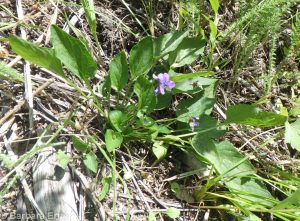
In his 1912 paper, Nelson based several new plants on Clark’s collections, most of which were subsequently absorbed into the synonymy of previously existing names. One of these was even named in her honor: Viola clark[i]ae. When describing this species, Nelson stated that “I have pleasure in dedicating this apparently strong species to Miss June Clark, of Boise, Idaho, who made an extensive collection of the plants, in duplicate, in her home neighborhood and in the mountains of Washington County, during the season of 1911. Her no. 84, from Clear Creek, in the Boise Mountains, July 4, 1911, is the type.” Morphologically comparable plants have been located in both Clear Creek and nearby Pine Creek (photo here), tributaries on the south side of Grimes Creek that are included in boundaries of the Boise Front. Although Nelson emphasized the distinctiveness of Clark’s collections, the name is currently placed in synonymy of a broadly defined early blue violet (Viola adunca), though Clark’s plants tend to have narrower and hairier leaves than the norm for this species.
Nelson’s other new plants based at least in part on Clark’s collections are a willow (Salix boiseana; currently in S. lasiolepis) and a rabbitbrush (Chrysothamnus oreophilus var. artus; currently in Ericameria nauseosa var. oreophila) from Boise, a sweetpea from Clear Creek (Lathyrus bradfieldianus; currently in L. pauciflorus), and a buckwheat (Eriogonum fasciculifolium; currently E. sphaerocephalum var. fasciculifolium) and a lupine (Lupinus tenuispicus; currently treated as L. leucophyllus, sometimes as var. tenuispicus, sometimes as subsp. erectus) from Tamarack. Although most of Clark’s specimens were of vascular plants, she also collected a few fungi, leading Ewan and Ewan (1981) to speculate about an otherwise unfounded relation to mycologist Ernest D. Clark.

Thanks to the help of Molly Ackley Brown, and her Ancestry.com account, I now how have some of June Clark’s basic biographical statistics. She was born 12 February 1891 in South Dakota, and was still living with her parents by the time they moved to Boise, according to the 1910 census. In 1914 she married Harry Redeker, who was subsequently hired as chemistry and physics teacher at Boise High School. Harry also started Idaho’s first radio station, KFAU (precursor to KIDO), in 1922 (Just 2021). By at least 1936, the Redecker’s had moved to San Mateo County, California, where June died in 1975, age 84.
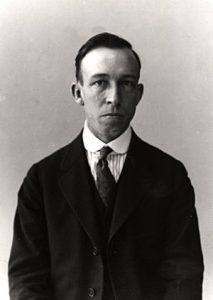
This bare-bones biographic summary still leaves many unanswered questions surrounding the enigmatic Miss Clark, with one overarching puzzle grabbing my attention: why would a promising young woman from the Boise area, seemingly with no botanical training, suddenly devote a single year to collecting and preparing a large number of professional-caliber herbarium specimens, only to abruptly cease this activity in spite of encouraging feedback, and even having a species named in her honor? Although the evidence is completely circumstantial, my suspicion is that the answer somehow involves her contemporary J. Francis Macbride (changed from McBride in 1914), another student from Idaho who ended up under the tutelage of Aven Nelson, and another early Idaho botanist whose biographical sketch I’ve been working on. From an earlier paper by Nelson (1911), and from Roger William’s (1984) excellent biography of Nelson, we know that Macbride was “a boy just out of Boise High School” when he first sent plants to Nelson for identification in 1910. This initial contact led to Macbride collecting more plants for University of Wyoming and eventually becoming a student of Nelson’s. All of which makes it quite possible that Clark and Macbride were students together at Boise High School, jointly developing a mutual enthusiasm for botany. If so, then it only makes sense that Macbride would have shared the training and encouragement he received from Nelson, along with access to specimen preparation resources at the University of Wyoming. This would still beg the question, however, of why Clark ceased collecting plants after only a single year, whereas Macbride went on to an illustrious botanical career that included the Flora of Peru and photographing type specimens in Berlin. I can think of a multitude of possible factors, both personal and professional, but all are sheer speculation at this point.
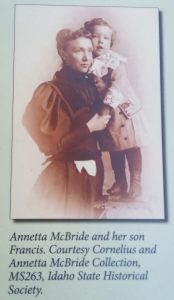
Macbride also provides a tangential connection to another enigmatic woman who had a plant from southwestern Idaho named after her, though from the Owyhees instead of the Boise Front. This is Annetta McBride, wife of Cornelius M. McBride and mother of J. Francis Macbride. Mother and son were unusually close, to the extent that she joined her son in the field at least in 1910, and then apparently accompanied him to Laramie and Harvard (Williams 1984). Nelson named one of their collections from the Owyhees Onagra macbrideae to honor Mrs. McBride, “who so industriously and discriminatingly assisted her son in the field work during most of the season of 1910” (Nelson 1911). Although Nelson considered it to be a different from a similar evening-primrose collected by Macbride from the Boise Front, described in the same publication as Onagra ornata, both names are now included within Oenothera elata ssp. hirsutissima.
BERNICE BJORNSON
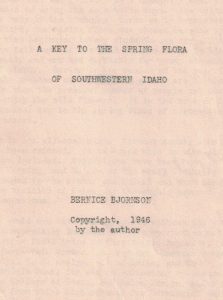
When I was a student at Boise High School (class of 1971), I was fortunate to have had Fred Baldridge as our biology teacher. Equally important to my budding botanical interest was the stack of mimeographed copies of “A Key to the Spring Flora of Southwestern Idaho” that were used in the class. Some years later, I looked up the then-current biology teacher to see if these books were still around. As I’d expected, they were no longer being used, but fortunately they hadn’t been discarded, either, so the teacher was willing to give me several copies to distribute among some of the botanical libraries I knew would be interested in having them (keeping one for myself as well, of course!)
With book in hand, and a burgeoning interest in botanical history, I became increasingly curious about the author herself, Bernice Bjornson. The Preface to her book provides the primary source of relevant information: that it was prepared as a thesis project at the University of Idaho, the boundary of the area covered, and people who helped her with field work, transportation, and general encouragement. Her reasons for producing a non-technical key to the spring flora of southwestern Idaho are several-fold:
- There was no book currently written for the flora of this part of the state.
- The existing books that partly cover this area had so many technical terms that use was difficult even with a glossary; as many of these terms as possible were therefore eliminated “as is consistent with clarity and accuracy”.
- Spring is a good time for beginning botany students to become familiar with the classification process, when the most wildflowers are in bloom, and also when people get outdoors. In contrast, fall is when “most of the wild flowers still in bloom belong to the sunflower [Asteraceae] family and are too difficult for young students having little knowledge of plants.”
- A general hope that the book will stimulate wider interest in the local flora.
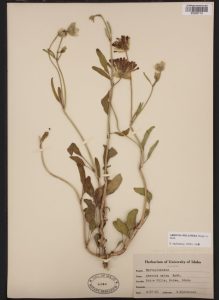
The continued value of Bjornson’s book is not as a taxonomic reference, since it is of course very much outdated as well as unabashedly non-comprehensive. And to my knowledge, none of her collections were used as the basis of new species, though at least one (pictured above) is among those recently described: i.e., the Boise sand-verbena, Abronia mellifera var. pahoveorum. Her book and collections are nevertheless invaluable for providing a snapshot of a slice in time, documenting both the former local abundance of now-uncommon plants and the early appearance and spread of several non-native species. The book is a also a gold mine of enlightening comments in delightful prose about the various plants addressed, in particular names and uses of plants known to Idahoans at that time, and earlier. The discussion of Cusick’s primrose, Primula cusickiana, is an excellent example:
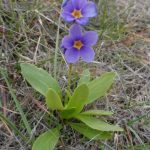
“A few places in the West are fortunate in having the attractive little primrose known in southern Idaho as Wilcoxiana, Primula cusickiana. Its leaves are simple, entire, and basal. Its flowers borne on a leafless stalk vary in color from pale blue to dark purple with a yellow eye. They are fragrant. People who lived in southwestern Idaho in the early 1900’s tell us that in spring the foothills used to be a mass of color with these flowers. Surely this is a flower which needs protection; one has to hunt for it nowadays.”
Bjornson also makes liberal use of even earlier popular wildflower guides, such as Wild Flowers of the Pacific Coast (Haskin 1934) and Western Wildflowers and Their Stories (Saunders 1933). The entry for Eriophyllum is characteristic:
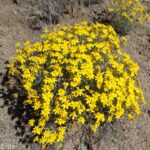
“A search through the books on wild plants resulted in our finding the following reference to a common name for this plant that is so common on the foothills near Boise: ‘There is now an attempt to be made to popularize it under the name Oregon sunshine. This name seems to me especially appropriate, but it should be recognized as applying in a broad sense to all of the Oregon Country, a great territory now divided into three or more states.’ [Haskin 1934]. Indeed, a bit of sunshine it is with its many bright yellow flowers made brighter by the grayness of the leaves and stems.”
In turn, I have made liberal use of incorporating excerpts from Bjornson’s opus (and embedded quotes from earlier publications) in the species’ pages of this website. This has been greatly assisted by Anne Halford’s aid in acquiring funding from the Bureau of Land Management, which hired Christina Riddle to transcribe the majority of Bjornson’s floristic work. Although the book itself is still under Bjornson’s personal copyright, having access to an electronic copy has made it easy to extract relevant portions for use here, with proper citation of this nearly forgotten book now supplemented by the background presented here.

As for Bernice Bjornson herself, I am indebted to Molly Ackley Brown, for locating a yearbook with Bjornson’s photo (and signature) and sharing information from her Ancestry.com accounty, and to Tom Thomason, for information from the 1940 census. As a result, we now know that Bernice Bjornson was born in North Dakota in 1901, so she was only 10 years younger than June Clark. The family, originally from Iceland, was farming in Mountain Home by 1910 and in Rupert by 1930. In 1940, which is the same year that Bernice was collecting plants in connection with her thesis at University of Idaho, she is listed in the census as living with her parents in Boise and teaching at Boise High School (with my father, who lived only a block away, as one of her possible students!) This means that Bjornson was already around 40 years old when she decided to pursue an advanced degree at University of Idaho, with pedagogy evidently more important than botany per se. She never married, and died in 1959, age 57, of heart disease.
WHERE IS CLEAR CREEK?
Although Bernice Bjornson’s collecting activities in the Boise Front were nearly three decades later than those of June Clark, there was only a ten year difference in the age of the two women. It is even possible that they might have overlapped at Boise High Schoool, if Bjornson joined the faculty before the Redekers moved to California, but it would be a narrow window for this to have occurred.
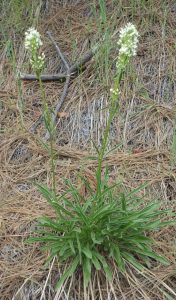
It is nevertheless intriguing to wonder if Bernice’s botanical interest could have been at all influenced by June’s earlier efforts, especially since both women made collections from a place called Clear Creek in Boise. Never having heard of a local Clear Creek myself while growing up in Boise, my curiosity was picqued: where exactly was this particular Clear Creek, and why would both women have chosen it as a collecting destination? As further incentive to figure this out, several of the plants collected from Clear Creek were otherwise unknown, or nearly so, from other parts of the Boise Front; i.e., sugarbowl (Clematis hirsutissima), Virginia strawberry (Fragaria virginiana), white frasera (Frasera montana), black twinberry (Lonicera involucrata), northern suncup (Taraxia subacaulis), and early blue violet (Viola adunca), including the type of Viola clarkiae.
It took a couple of years, but I eventually figured out that the Clear Creek in question would have been the small community on the backside of Boise Ridge, along a road and tributary with this name south of Grimes Creek. Even though many of Clark’s and Bjor[e]nson’s collection have been databased as Ada County, due to the association with Boise, this location is actually in Boise County. Because of the community’s mining history, it is essentially all private land, making access difficult except along the main road. I was therefore delighted to learn that one of my botanical colleagues, Jessica Irwin, had recently purchased an undeveloped parcel of land here and was willing to take me botanizing with her. We had no trouble finding many of the plants that Clark and Bjornson had collected, including the Clematis, Frasera, and Viola, as well as another rare plant (Idaho penstemon, Penstemon laxus) not previously recorded from the Boise Front boundaries. We then found many of the same species on the next drainage to the north, Pine Creek, which traverses public land (Boise National Forest). As a result, I decided to refine the northeastern bounderies of the Boise Front flora area to include both Clear Creek and Pine Creek.
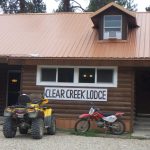
What makes Clear Creek in particular so intriguing is that it appears to be a small remnant prairie, very unusual in this part of Idaho. If so, this could have been part of the appeal of the original community, as an attractive area to settle in the mountains without needing to clear out all the timber first. I would love to learn more about the history of this area, since my suspicion is that it might have also served as the convenient get-away resort from Boise’s summer heat in the early 1900’s, easily accessible (relatively speaking) along the old stagecoach route between Boise and Idaho City. There is even a Clear Creek Lodge, though whether this is historical as well as modern remains unknown. If it was a well-known resort at the time, that would explain why both Clark and Bjornson chose to collect here, and why they considered it an extension of Boise.

REFERENCES
Bjornson, Bernice. 1934. A Key to the Spring Flora of Southwestern Idaho. Copyright by the author, evidently self-printed.
Boone, Lalia. 1988. Idaho Place Names: A Geographical Dictionary. The University of Idaho Press, Moscow.
Ewan, J., and N. D. Ewan. 1981. Biographical Dictionary of Rocky Mountain Naturalists. Regnum Vegetabile vol. 107.
Haskin, L. L. 1934. Wildflowers of the Pacific Coast. Metropolitan Press, Portland, OR.
Just, Rick. 2021. Idaho’s First Radio Station. https://www.rickjust.com/blog/idahos-first-radio-station9065497
Love, Rhoda M. 2002. Louis F. Henderson (1853-1942): The Grand Old Man of Northwest Botany. Native Plant Society of Oregon Occasional Paper 2: 1–58. (adapted for Flora of Oregon 1: 12–13. 2015).
Mulford, A. Isabel. 1894. Notes upon the northwestern and Rocky Mountain flora. Botanical Gazette 19: 117-120.
Nelson, A. 1911. Contributions for the Rocky Mountain Herbarium. IX. New Plants from Idaho. Bot. Gaz. 52: 261–274.
Nelson, A. 1912. Contributions for the Rocky Mountain Herbarium. XII. New Plants from Idaho. Bot. Gaz. 54: 404–418.
Saunders, Charles Francis. 1933. Western Wildflowers and Their Stories. Doubleday, Doran & Company, Inc. Garden City, NY.
Williams, Roger L. 1984. Aven Nelson of Wyoming. Colorado Associated Univ. Press, Boulder, CO.
